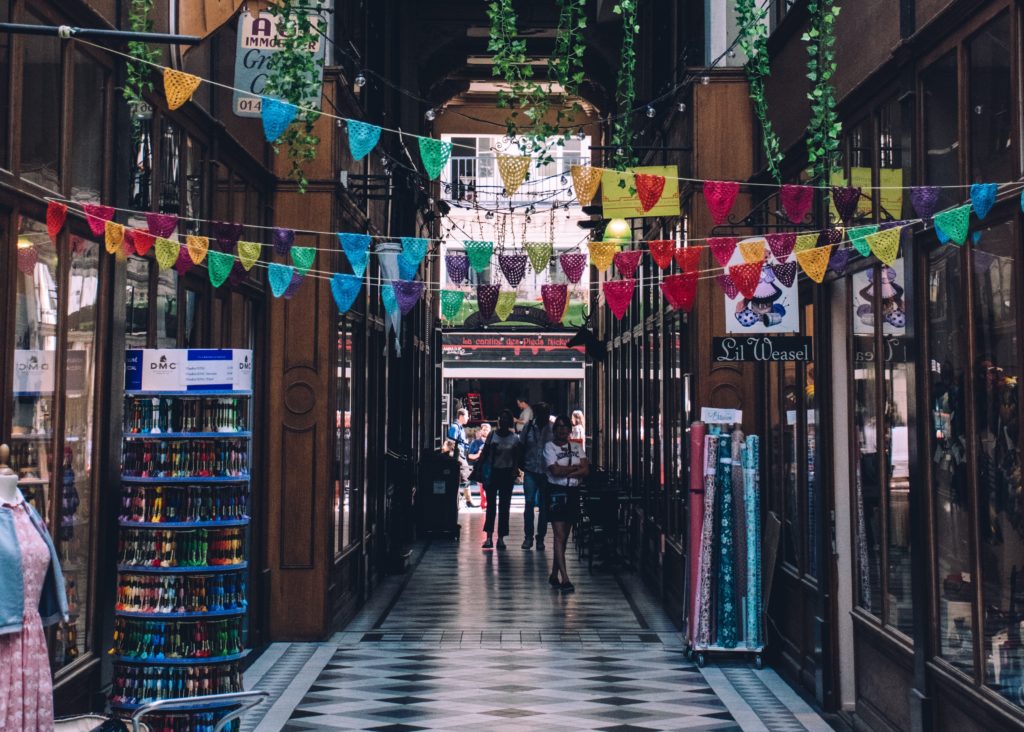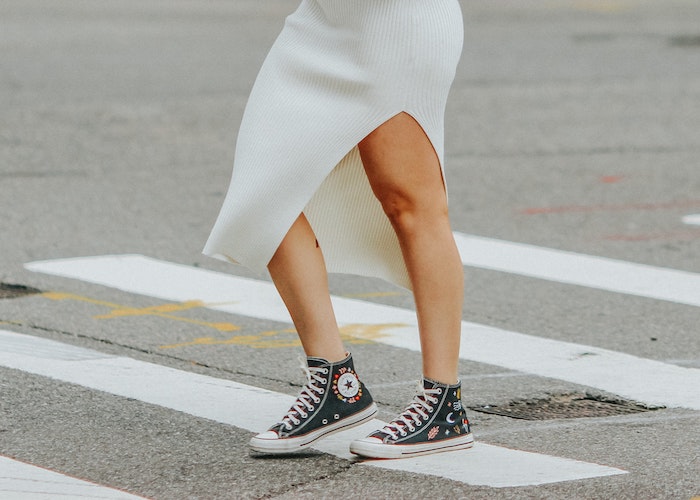The Sneaky Marketing Tactic That Always Makes You Spend More Than You Want, & How To Avoid It

Whether you’re unpacking a new apartment or giddily replying “Yes!” to a wedding RSVP, you can probably identify with the mushrooming list of accessories that go along with many purchases. If you’re getting a new couch, what about accent pillows and a new throw blanket? A wedding invite probably means you’ll want a new dress, and shoes to go with it and you’ll need a different kind of strapless bra and maybe jewelry. And before you know it, you’ve bought ten things when you only meant to buy one.
What is cross-selling?
It’s not just in your head — this practice is often called “cross-selling” in marketing parlance. It’s the driving force behind everything from Amazon’s “frequently bought together” feature to the McDonald’s cashier asking “Do you want fries with that?” after you order a hamburger.
However, here’s a great budget hack: stop buying things that will make you buy more things. And if you must buy the first thing, try to borrow, rent, or simply forego the accessory items altogether.
Here are some examples to watch out for:
Clothing that requires special accessories, storage, or cleaning
A cute new dress that requires a complicated new bra, or a blazer or top that’s going to need to be dry-cleaned, or boots that come with a recommended waterproofing spray, polish, and storage inserts. There’s no end to the number of clothing-specific examples out there, but the main idea is: if what you’re considering buying to put on your body is going to require you to buy another thing, pause and ask yourself if you really need any of it. Do you already own a dress you can wear instead? Is there a friend you can borrow one from?
Check out Rent the Runway or Style Lend if you really want to wear something new and fun, and shop your closet for accessories. If you’re perusing new jackets, steer clear of ones that are going to require specialized cleaning or weatherproofing. Instead of buying fancy boot socks to go in your new boots, just wear socks you already have. Take a look at places like ThredUp or a consignment store for the boots. Every time you have your credit card out, pause before hitting “buy now” on anything that requires an accessory or ancillary purchase.
Beauty products
My friends and I sometimes play a game where we come up with examples of “things that are things that didn’t used to be things.” During a recent round, someone mentioned beauty fridges, and I almost fell out of my chair. Any beauty item that recommends or requires you to buy more accessories gets a hard second look from me, and needless to say, I’m not going to be buying a beauty fridge for my products any time soon. I’m happy to face mask with the best of them, but those can live in my regular, full-size kitchen refrigerator along with all my condiments and perishables. There are other, less obvious examples, too. New makeup that “requires” a set of new brushes? A special cleanser for those new brushes? Where does it end?
Home organization
I love to binge-watch home organization shows and browse #declutter on Instagram to get inspired to clean my apartment. But the minute these veer into “buy this to get organized!” territory, I know it’s time to step away. You don’t need 10 matching clear plastic drawer dividers or cute acrylic bins to organize your kitchen cupboards or get your closet under control. In fact, as any Marie Kondo fan knows, organizing starts with getting rid of stuff you don’t use instead of adding more stuff to your space. Don’t fall for any show, article, or website that tells you that you have to spend money to get organized, and don’t buy more stuff to organize the stuff you already have.
Technology upgrades
Yes, we’re all probably guilty of drooling over the new iPhone or latest smartwatch release from time to time, but have you ever thought about how many accessories go along with a technology upgrade? A new phone case, popsocket, selfie stick, headphones, selfie ring light, and insurance for your expensive new device. With a smartwatch comes fancy bands and bracelets, screen protectors, portable chargers, and maybe more data. There are so many things you could buy to go along with your new technology.
Instead of throwing all of those in your cart along with whatever your latest upgrade is, think long and hard about if you really need any of it, much less all of it. Can you make your current phone last for another year? Have you thought about going the refurbished route and buying something that is newer instead of newest? Is there anyone you know who has upgraded lately and would be willing to give or sell you their case and accessories for your newer device? In addition to being expensive, technology upgrades create a lot of e-waste, and there’s already way too much of that floating around out there. Try to cut down on buying brand-new technology upgrades and accessories for the sake of your wallet and the environment.
In conclusion: stop buying stuff that makes you buy more stuff.
It’s not possible (or fun) to not buy anything at all, and that’s not what I’m recommending. Instead, before you purchase something new, ask yourself if you’ll have to buy something else to go with it in order to be able to use, wear, or otherwise consume it. If the answer is yes, think hard about whether you need all — or any — of it in the first place.
A grant writer by day and personal finance fanatic by night, Marisa is an avid traveler who now lives in Boston. When she’s not reading or writing for work or play, she enjoys running, thrifting, and searching for the most authentic Mexican food in the city.
Image via Unsplash
Like this story? Follow The Financial Diet on Facebook, Instagram, and Twitter for daily tips and inspiration, and sign up for our email newsletter here.




